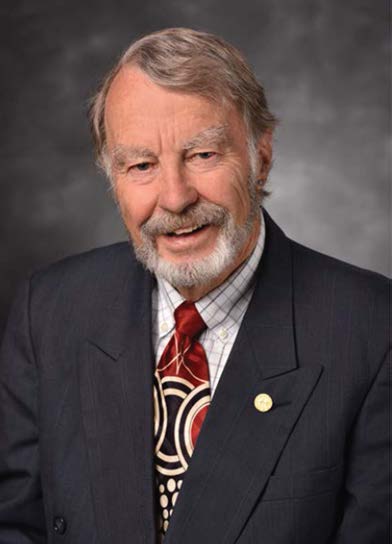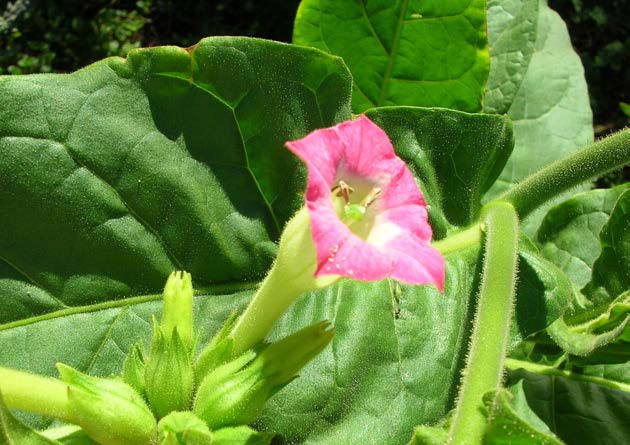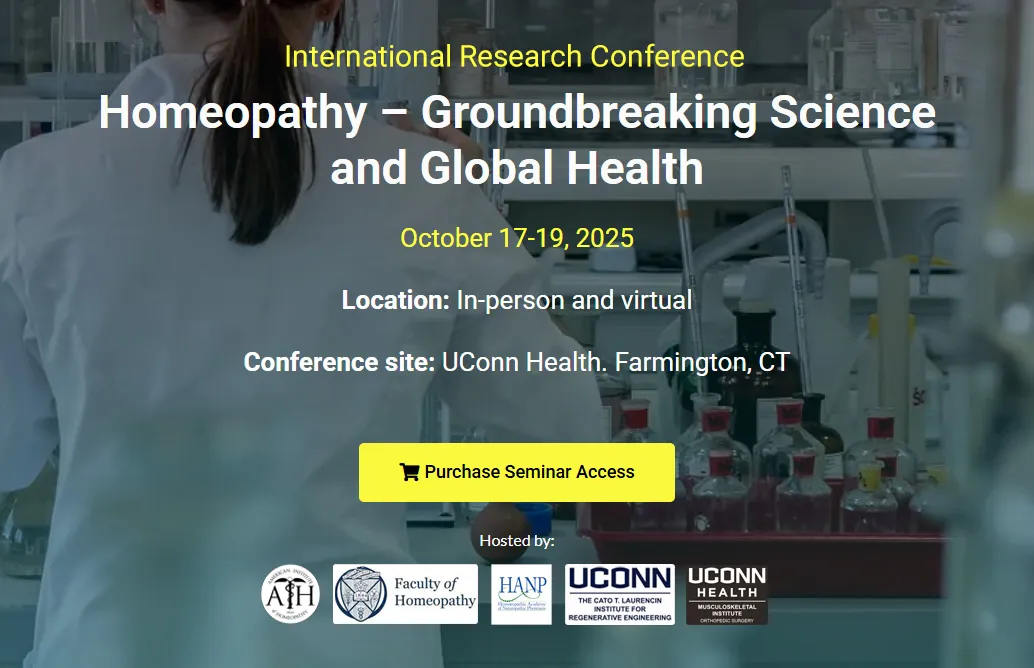
My Homeopathic Beginnings: Tabacum, An Involuntary Proving
Nick Nossaman, MD, DHt
Often, when homeopathic “types” get together, the topic of “How’d you get into homeopathy?” comes up. The accounts that are related in answer are inevitably interesting to me. Among the physicians, the description of the fertile ground of disillusionment that preceded their flourishing in the new paradigm is often very similar. (This is assuming that they weren’t already aware of the treasure of homeopathy from having been raised with it from a young age). Many existing physician-converts were ready for introduction to this nature-friendly discipline after having experienced the shortcomings and reductionist paradigm of mainstream medicine. The factors about homeopathy that resonate with the individual physician are somewhat varied however: intellectual appeal, feeling-level affinity for treatment more harmonious with nature, experience of what it can do—in oneself or another. Those without medical school in their past who are thereby free of the need to unlearn inaccurate medical school maxims often tend to “take to it like a duck to water,” as Catherine Coulter used to say (and as she experienced herself, I’m sure).
 For me, the introduction to homeopathy came while I was at a party of ex-priests and their wives (I was never a priest, by the way) at which the hostess insisted that one of her friends describe to me her experience with homeopathy. Her friend proceeded to do so with some hesitation, wary of being judged by a doctor type. Within a short period of time, she described having been treated from afar for her migraines by Dr. Dwight Smith, a well-known nearly 100-year-old homeopathic physician from California. She sent him her responses to a questionnaire, and he sent her a packet with a tiny bit of sweet tasting powder. Shortly after taking it she experienced the worst migraine she had ever had … and never had another headache after that! This experience propelled her to desire to learn more and to begin prescribing for friends and family. Accounts like this, and her description of the phenomenon of Hering’s Law in the case of suppressed skin eruptions, seized my attention. Why had I not heard of that intuitively reasonable phenomenon in medical school, where the only mention of the word “homeopathic” was in describing an ineffectively small dose of medicine? Here, in contrast, was a system which regarded illness as part of a logical lifelong tapestry.
For me, the introduction to homeopathy came while I was at a party of ex-priests and their wives (I was never a priest, by the way) at which the hostess insisted that one of her friends describe to me her experience with homeopathy. Her friend proceeded to do so with some hesitation, wary of being judged by a doctor type. Within a short period of time, she described having been treated from afar for her migraines by Dr. Dwight Smith, a well-known nearly 100-year-old homeopathic physician from California. She sent him her responses to a questionnaire, and he sent her a packet with a tiny bit of sweet tasting powder. Shortly after taking it she experienced the worst migraine she had ever had … and never had another headache after that! This experience propelled her to desire to learn more and to begin prescribing for friends and family. Accounts like this, and her description of the phenomenon of Hering’s Law in the case of suppressed skin eruptions, seized my attention. Why had I not heard of that intuitively reasonable phenomenon in medical school, where the only mention of the word “homeopathic” was in describing an ineffectively small dose of medicine? Here, in contrast, was a system which regarded illness as part of a logical lifelong tapestry.
With the desire to learn more, I spent a subsequent afternoon with her in her kitchen hearing more about this fascinating system. When she showed me her array of medicines, I noticed a small bottle labeled “Tabacum 10M,” which she confirmed was made from the tobacco plant. Later in our discussion, I asked her, “If this is about likes curing likes, would a dose of that Tabacum make me stop smoking cigarettes?” She was wisely non-committal, saying, “Well … maybe” in a hesitant voice. Nonetheless, I determined to try it, and took a few pellets of Tabacum 10M under my tongue and waited for a lightning bolt to strike the cigarette packet from my pocket, but nothing happened—even to the point that I forgot about the experience over the next few weeks.
A month or so later, while at a (different) party, engaged in conversation, I suddenly fainted, hitting the floor like a sack of potatoes falling off the back of a truck. I regained semi-consciousness but was apparently very pale. I had never fainted in my life, nor even felt close to it. A nurse friend determined that my pulse was 40. Each time I attempted to sit up I became lightheaded—a classic state of shock, as I heard someone say, “What are we supposed to do when the doctor goes down?” I heard someone else say, “Should we call an ambulance?” and someone else said, “Wait—he’s smiling!” (In retrospect I found this to be quite incongruous, as I felt terrified of going to the emergency room, even though I was currently in new and perplexing territory). Every time I tried to sit up, I felt more light-headed, so that I just requested that they provide me with a blanket and a pillow and give me some time in the next room to see if my situation would improve.
Ironically, while in that state and that location, I experienced the pleasure (more meaningful than usual in party environments) of one-on-one conversations, as a succession of friends came to sit with me and chat for short periods. Eventually, with my condition having remained the same, the host and others decided I would be more comfortable in the guest bedroom, and two of them helped me upstairs and put me to bed. I remained in the same physical state as the hour became late and the party was winding down. At that point it occurred to me that this may all have been somehow related to the Tabacum that I took. Following that possibility, I recalled having read in William Boericke’s Homeopathic Materia Medica section on Tabacum that its antidotes are sour apples and vinegar, and so I decided to try some vinegar. Someone brought me a small amount in the bottom of a glass, and I took a large sip. Not within seconds but instantly I was back to my normal state. I sat up in bed, put on my shoes and said, “I guess we should go home.”
 The next obvious question would be, “If I hadn’t antidoted the Tabacum, would I have given up cigarettes at that time?” There is, of course, no way to know, but I did quit smoking—after numerous fruitless attempts – within the next year with the help of Smokenders®, a program which no longer exists unfortunately.
The next obvious question would be, “If I hadn’t antidoted the Tabacum, would I have given up cigarettes at that time?” There is, of course, no way to know, but I did quit smoking—after numerous fruitless attempts – within the next year with the help of Smokenders®, a program which no longer exists unfortunately.
Given that the experience was more than 40 years ago and I didn’t have the presence of mind to ask an observer what they perceived, I can only relate a few of my symptoms at the time, all of which are found in C. Hering’s The Guiding Symptoms of our Materia Medica in the description of Tabacum: “slow perception, difficulty in concentrating his mind … faintness … intermittent pulse … vertigo … deathlike paleness of face and sensation as if he could not support himself … cannot rise up … chilliness … cold skin ….”
As you would expect, the episode engaged me intellectually, but even more so on a visceral level. I am exceedingly grateful for having had the experience, as there have been subsequent times of discouragement in my homeopathic career in which I would ask myself, “Is there really anything in those little sugar pellets?” At those times, the entrenched memory of my experience with Tabacum would help to see me through. In conclusion, it’s pretty clear to me that I did a proving of Tabacum, and in retrospect—had the scientist in me have kicked in (as was the case with C. Hering and his self-proving of Lachesis muta)—I could have gathered more information that may have enriched the data base to some degree.
A few physician contemporaries of mine actually attended the National Center of Homeopathy (NCH) summer school introductory course before me but decided against pursuing homeopathy further, one because of its being less lucrative, another because it was so time consuming. So I can thank my stars for the persuasive and riveting introduction to homeopathy that I experienced. I had the further good fortune of meeting Dr. Richard Moskowitz—in Santa Fe at the time—a real, flesh and blood physician whose medical practice became totally homeopathic as a result of his predisposition and experiences. He in turn guided me toward signing up for the NCH summer school. In the meantime, when Dr. Maesimund Panos and many of her colleagues were in Denver for a conference, she was gracious enough to take my call about my 7-year old daughter who was screaming with a rightsided earache, featuring a fiery red eardrum. She suggested that I should acquire and administer Belladonna (30x), which worked like a charm, and I was in—and eager to attend summer school in Millersville, Pennsylvania.
(A small, interesting side note to this account is the fact that a swig of apple cider vinegar does wonders to snap one out of the general and nasal irritation from being in a smoky environment, especially involving tobacco smoke.)
The interest in homeopathy in young doctors currently has seemed to fade considerably, perhaps partly because of hefty school debts and the lack of inclination for more study and more debt acquisition, as well as due to their experience of immersion in the reductive thinking of allopathic medicine. I can only hope for another period of expansive thinking and regard for the primacy of nature, such as in the late 60’s and 70’s, which was accompanied by the resurgence of commitment to homeopathy by young medical professionals. These older doctors are now passing the torch to the few special younger ones who have cast their lot with this precious discipline which we hope will gain the recognition and acceptance that the planet desperately needs.
About the author: Dr. Nossaman retired in 2019 after 50 years of medical practice, 44 years of which were devoted to homeopathic medicine in Denver Colorado. He is board certified in homeopathic medicine, a former Board member and President of the National Center for Homeopathy, a former Board member and President of the American Institute of Homeopathy, and formerly a member of the Rhus-Tox study group of Homeopatia Internationalis for over 20 years. His other interests include Jungian psychology, photography, watercolor, golf, pantomime, music and poetry. He taught homeopathic courses for beginners and more advanced prescribers in the U.S. and Central America, and has written numerous articles for various homeopathic journals.
* Nicotiana tabacum – By Forest & Kim Starr (https://creativecommons.org/licenses/by/3.0/deed.en)
About the AJHM
The American Journal of Homeopathic Medicine (AJHM) is a peer-reviewed scientific journal, specifically intended to meet the needs of physicians involved in the specialty of homeopathy. The editor invites original manuscripts, feature articles, research reports, 'Homeopathic Grand Rounds' cases studies, abbreviated case reports for 'Clinical Snapshots,' seminar reports, and position papers that focus on homeopathy, as well as book reviews and letters to the editor. Click below to subscribe to the Journal.
Latest Issue of the AJHM

AJHM – Spring 2025
Volume 118 Number 1
Table of Contents
- Editorial: In this issue
- President’s Message: Our Guiding Precepts
- Homeopathic PuZZle?
- Alchemy, Spagyrics, and Homeopathy: Tracing the Threads of Energetic Medicine
- The Genius of Fluoricum acidum: Part One
- An Interesting Case of Kola
- Book Review: ‘Lessons in Pure Homeopathy, From the Writings of Hahnemann’s Best Student and Medicine’s Most Successful Practitioner, Adolph Lippe, MD’ – Edited & Annotated by A. Saine, ND
- Book Review: ‘Folkways and Homoeopathy: Our Ancestral Secret of Healing’ by Shailendra Ramchandra Vaishampayan


